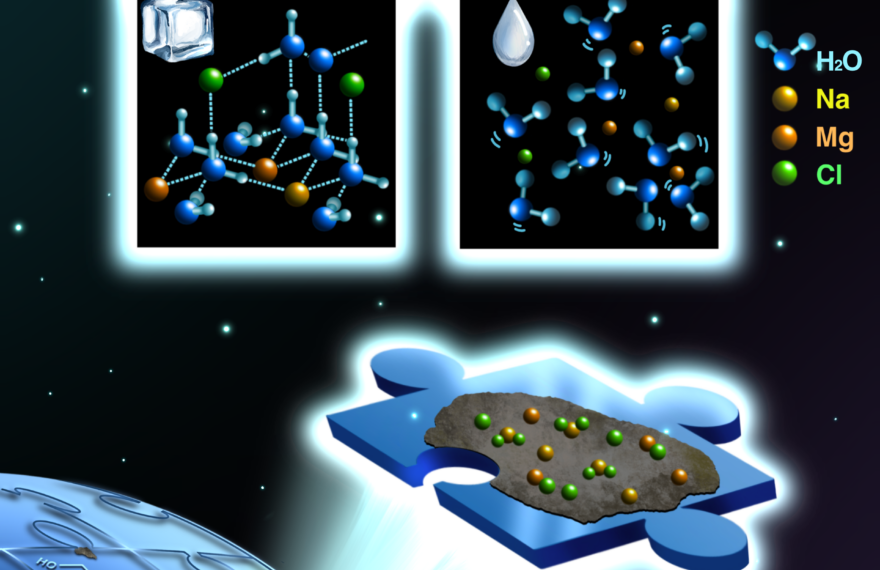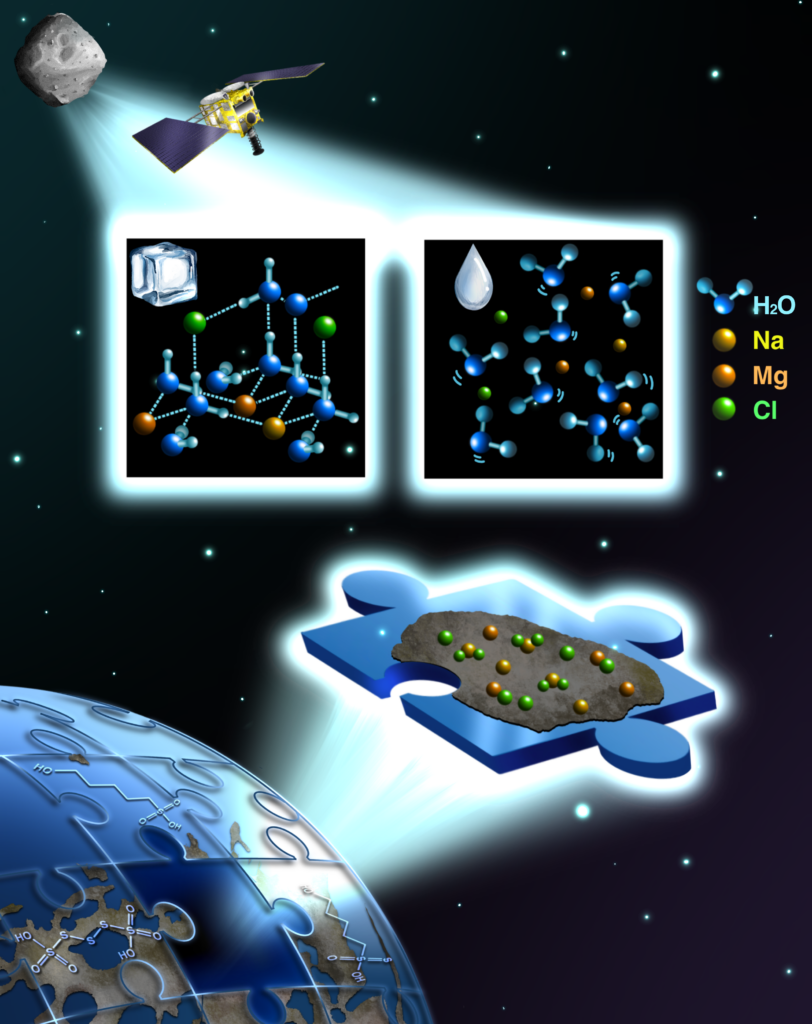[Press Release]
Discovery of Primordial “Salt” and Organic Sulfur Molecules from Asteroid Ryugu

Joint Press Release
Shogo Tachibana (Professor, Department of Earth and Planetary Science, Japan Aerospace Exploration Agency)
Japan Agency for Marine-Earth Science and Technology (JAMSTEC; President: Hiroyuki Yamato) The international collaborative research group led by Dr. Toshihiro Yoshimura, Deputy Senior Researcher, and Dr. Yoshinori Takano, Senior Researcher, at the Biogeochemistry Research Center, and Prof. Hiroshi Naraoka, Graduate School of Science, Kyushu University, is a joint research group with the Graduate School of Science, The University of Tokyo, National Institute of Advanced Industrial Science and Technology (AIST), Horiba Advanced Techno Co. The group, together with researchers from the Graduate School of Science at the University of Tokyo, National Institute of Advanced Industrial Science and Technology, Horiba Techno, Horiba Techno Service, Thermo Fisher Scientific Japan Group, Hokkaido University, and Tokyo Institute of Technology, conducted precise chemical analysis of soluble components in samples from the asteroid Ryugu to determine their composition, content, etc. The results of the analysis are shown in Table 1. The composition and content of the soluble components were clarified.
Asteroid Ryugu is one of the primordial bodies that retain the chemical composition of the entire solar system before the birth of the Earth. The initial analysis of Hayabusa2 has revealed various properties, contents, and history of the asteroid, but the material information of ionic components among soluble components has remained unknown.
In this study, soluble components were extracted from samples of the asteroid Ryugu and precisely analyzed at the inorganic and organic molecular levels. The results showed that hydrothermal extracts, which reflect the most soluble components, are very rich in sodium ions (Na+). Sodium ions act as electrolytes that stabilize the surface charge of minerals and organic matter, and some are thought to precipitate as sodium salts (Salt) by binding with organic molecules and other substances. Various organosulfur molecules were also found in the extract. It is thought that the chemical state of the organic sulfur molecules in the water on the asteroid Ryugu changed, resulting in the chemical evolution of a wide variety of organosulfur molecules.
This finding is important not only for unraveling the material evolution of the early solar system, but also for answering the major question of how they led to the chemical processes that ultimately led to the birth of life.
The results were published in the scientific journal Nature Communications on September 18, 2023 (JST).

The water (H2O) contained on the asteroid Ryugu is thought to have been repeatedly frozen/thawed during its evolution in the solar system, dissolving and precipitating salts and other substances contained in minerals. By analyzing the soluble components, we can unravel the formation of the first “salt”.
Translated with www.DeepL.com/Translator (free version)
For more information, please refer to the following
Graduate School of Science web: https://www.s.u-tokyo.ac.jp/ja/press/10021/
Publication URL: https://www.nature.com/articles/s41467-023-40871-0

